COVID-19 Pandemic and Horticultural Sector: An Investigation of Cause & Effect Relationship in J&K
Introduction
Despite radical structural changes over the years, the agricultural sector consistently continued to remain an important activity supporting J&Ks’ economy. Although the domestic product generated in this sector has increased by 25.94 cr. since 1980-81 (DE&S, various issues) but it could not keep pace with the growth of other sectors of economy. The proportionate decline in the role of this sector towards states’ domestic product seems discouraging given the huge dependence of labour force on this sector. The concentration of poor and landless labourers has given a strategic place to this sector in the process of economic progress for whom it is the only option for sustenance and livelihood. Agriculture has played an important role in ensuring inclusive growth and providing food security to its populace [1] despite huge urban pressure on land resources. The development of this sector seems more relevant in spite of shrinking land resources, depletion of water resources, climate change, costlier farm-inputs and instability in global markets. To overcome these issues, quality research and skill development would be required to develop technologies that are relevant to the region and could be put in use to achieve rational resource use efficiency. But it will require strengthening of infrastructure which could intern result in and better governance/ management to make delivery of services better.
Switching over to Horticulture
The agro-climatic diversity of the union territory of Jammu and Kashmir favors diversification towards horticultural crops. The capacities of the territory are being increasingly shifted towards the production of horticultural crops as driven by market demands and in turn profitability. The reason for this switchover may be attributed to the less remunerative production of field crops like rice and maize. Horticulture crops occupy an area of 3.31 lakh hectares (2018-19) in J&K, of which a whopping1.64 lakh hectares is under apple cultivation [2]. 20 and 24 lakh metric tons annually of fresh and dry fruits, respectively of which apple alone constitutes 80 per cent. Horticultural sector is the largest employment provider in the region engaging over 23 lakh people, depending directly or indirectly on this sector [3]. Kashmir has rightly been described as the land of fruits, producing 24.15 lakh mt of fruits from 332 lakh ha of land. Its land, environment and salubrious climate provides greater facilities for rapid growth of horticulture industry. The fruit production is highly capital and labour intensive activity, thus become the most dominant factor for changing the social and economic status of rural Kashmir.
The vibrant fruit sector of Kashmir holds key to the economic growth as well as sustenance by containing the widespread unemployment in the union territory. The fruit sector has strong backward and forward linkages which involve such activities that have significant multiplier effects. From the input market to the final destination of produce, this sector has a long supply/ value chain. The market functionaries and various marketing logistics/infrastructures including cold storages, market yards, loading, weighing facilities involved in long supply/value chain constitute the basics of an efficient supply chain management. Any permanent or temporary changes that disrupt its supply/value chain to any extent have long lasting multiple negative implications on the performance of the fruit economy. In accordance with this the political disturbances, climate change, price fluctuations, availability of labour or inputs, etc. may have undesirable effects on the desired performance of the horticultural sector. Undoubtedly the ongoing covid-19 pandemic and associated lockdown are expected to have some implications on horticultural economy necessitating assessment in terms of their magnitude which forms an objective of this study.
Status of Covid-19 Pandemic Across States & in J&K, UT
There is hardly any place on the earth which is not infected by this dreadful virus. Covid-19 pandemic that spread in every part of the world. This virus was first detected in Kerala (state of India) on January 30, 2020 and then gradually kept on spreading across all the states and UTs of the country. As of now the country has reported 4.47 million infected cases of which 3.47 million have recovered (MHFW, India). This covid-19 infection has taken about 75,062 lives. All the health centers across the country are involved in prevention as well as arresting further spread of the disease. In India, Maharashtra recorded highest number of cases compared to other states (Figure 1). The other highly affected states/UT’s in India include Tamil Nadu, Gujarat and Delhi. The situation is J&K, UT is also grim as the numbers of cases are adding to the infected patients with every single passing day. Within Kashmir province of Jammu and Kashmir UT the first covid-19 case was reported from Khanyar area of Srinagar city, and the case was having a travel history. Since then every nook and corner of the Union Territory was put on high alert with demarcation of district with Red, green and Orange zones. The capital of the UT, district Srinagar, witnessed highest number of infected persons (Table 1). A total of 671 people (614 in Kashmir and 57 in Jammu) have died of the virus in the Union Territory so far. The infection is spreading at an exponential rate and is yet to see its peak in the territory which calls for necessary measures to neutralize the effects of this pandemic.
Figure 1: State wise covid-19 confirmed cases and deaths recorded in India.
Ministry of Health & Family Welfare, Govt. of India, 10 September, 2020
Restricting Corona Spread with Lockdown
The novel coronavirus has wreaked havoc across the globe, killing and infecting millions and in turn affecting world economy. Since the virus is highly communicable, the only option to prevent or slow down its spread is to prohibit contacts and maintain social distancing. Therefore, like other economies, lockdown was taken as a measure to restrict its spread across India which has over 1.35 billion population. Lockdown is considered one of the harsh steps to combat the coronavirus pandemic as it is novel in nature and no vaccine is available till date despite a lot of ongoing research. Lockdown is the best available option for India considering it less advanced and less equipped health sector. J&K UT also observed like rest of the country a strict lockdown with prohibitory orders and all the economic activities of the territory were stopped. During this period government took a number of measures like opening up of dedicated covid-19 test centers, provision of support to the poor sections and relief package to few economic activities. Although the lockdown has reduced contacts and spread of virus significantly but the closure of economy definitely has broken the network of its various activities which is expected to have short as well as long term implication on the livelihood of different sections of the population and wellbeing of the national economy.
Lockdown Features and Impact on Growth Indicators of Horticulture
Lockdown in Kashmir valley of J&K was imposed to restrict the spread of covid-19. Barricades, barbed J-hock wires and even trunks of popular trees were used to block all the roads connecting cities, towns and villages. The restrictions imposed on internet, transport, and communication subsequent to the abrogation of Article 35A and 370 was further carried forward with strict prohibitions. The implication of the lockdown has impacted the already limping economic activities of the territory along with its relevant sectors. Of these, agricultural sector owing to its biological nature was expected to get drastically influenced by the lockdown, since the impact on this sector is complex and varies across diverse segments that form its value chain. Farming is gradually diversifying in favour of fruits especially apple which has strong linkages in pre-production and post-production. Apple cultivation is the main farming activity employing more than 23 lakh people in the valley and is the predominant activity of small and marginal growers. Apple production has long value chain between input markets and consumers of final products which necessarily has to be integrated. Through its value chain horticultural production and processing requires diverse inputs and services and any distortion in this chain would have drastic unfavorable impact on its productivity and growers net returns.
The restriction on transport, mobility, administration, financial sector, etc. under lockdown is an add-on hurdle inflicted on different segments of long value chain of horticultural sector of J&K. During the first phase of lockdown which coincided with leaflet and first fruit development stage of apple and the application of dose of nitrogen, potassium, phosphate, fungicides, acaricides, insecticides and sprays of other micro-nutrients which is highly crucial for plant health and prevention of infestation of pests got affected badly. Since the restrictions were imposed on all the activities, it has resulted in immobility of factors of production that delayed the application of inputs at stage specific for their execution. The complete shutdown of all Universities, Research institutions, KVK’s led to the communication gaps between apple growers and the extension functionaries resulting in no or poor percolation of advisories to the growers. The technological disseminations activities like farm visits, training/workshops and exhibitions could not be organized by the Agricultural institutions. Moreover, scientists and Subject Matter Specialists (SMS’s) were not able to attend experimental field that drastically affected field demonstration. The response to huge technological gaps owing to poor extension system was reported by 21.0 and 7.3 per cent of growers and SMSs, respectively. This duration has taken apple cultivation far from scientific package of practices in absence of the role of extension activities, financial institutions, etc. (refer Figure1 for details of implications).
The horticultural economy got severely hit when lockdown halted transportation that suspended the movement of the previous year’s harvest kept in the CA stores. March and April is considered the peak season for the stored apple to be transported to the mandis outside the state, but due to transport restriction, the fruit is expected to rot in the stores and the growers may not be in a position to meet the production cost including CA store charges and has been also disrupting the supply chain (Raashid Hassan and Ishtiaq Wani, 2020). As per reports approximately 4 per cent of Kashmir’s’ apple produce of 23 lakh metric tons was in cold storage units. The growers had to pay an amount of Rs 30 per box per month as cold storage charge and the apple which is stored for seven months costed around Rs 215 for a 16 kilogram box which amounts to an additional Rs 100 crore cold storage charges for one lakh tons of apples. Within CA stores the quality of apple gets gradually deteriorated raising the concerns for its sale but despite this fact the growers still paid the charges. As per official records apple worth Rs 900 crores were still in the valleys’ CA stores up to ending May, 2020 that imply, the loss of such a huge amount raised havoc among the farming community. The closing up of corporate or the functioning of private players has put manufacturing of fertilizers, pesticides, and packaging material to a complete halt and this problem intensified with the non-availability and immobility of raw material to these units.
The apple/vegetable growers faced lot of inconveniences in purchasing the chemicals and fertilizers due to closure of shops in the valley besides all the government offices and functionaries remained closed which inflicted indirect costs to growers in terms of non-availability of timely credit for performing capital intensive intercultural operations and purchase of inputs. In consideration to the severity of lockdown, a good proportion of worried growers were apprehensive of possible sale of their apple produce which apprehensions forced them to reduce the application of fungicides and other chemicals, further resulted in intense pest infestation. A proportion of growers preferred fungicides which are not prescribed in package of practices to save money to meet the expenses on basic necessities [4]. Since the vegetable and fruit cultivation is highly labour intensive, therefore, unavailability of laborer’s contributed too negatively to the apple economy. Labour demand in Kashmir broadly depends on out-side state labour force. Political disturbances that arose due to scrapping of Article 370 had already forced migration of laborer to return to their native places which had created scarcity of skilled/unskilled laborer’s in apple growing belt of the valley. The non-availability of laborer’s due to COVID-19 further aggravated the problems in production of fruits particularly apple and vegetable. The standing vegetable crop could not be harvested skillfully on time and there was a delay in transplanting of vegetables nurseries, which reduced the returns from vegetables further by an amount of Rs 22000 per kanal (Table 2). Apiculturists rent out beehives to apple growers for pollination of their apple orchards. Since these apiculturists are migratory, they were yet to return to the valley when covid-19 lockdown was announced. The mis-managed pollination not only caused loss to the apiculturists but is expected to decrease the productivity of apple by 20-25 per cent.
The poor execution of various economic activities relating to the value chain of apple and vegetables leads to an increase in the cost of cultivation. Farmers could not attend their fields in a crucial fruit development stage that resulted in pest/weed/disease infestation and an additional amount of Rs 450.0 were spent on this input. More demand in relationship with the supplies resulted in more wage rate of available labour. Agriculture land is being shifted to horticultural crops especially apple at alarming rate and nearly 2.5 lakh hectare apple area is in non-bearing stage. Farmers raise intercrops for home consumption thus increase their real income but owing to strict restriction there have been dis-economies worth of Rs 24000.00 per hectare as no intercropping has been done within non-bearing orchards. During the second phase of Covid-19 lockdown, the transporting fare escalated from Rs 15,000 per truck to around Rs 35,000 and even then, only few trucks were available for transporting the apple to the other mandis. Though the restriction on mandis was relaxed to open the outlets but the out of CA store apple produce could not see the buyers and the produce spoiled in a bad way. Similarly an additional amount was spent by growers in different items to resolve the added problems due to lockdown (Table 3).
Relaxation in Lockdown have Aggravated Problems
In the first phase of relaxation all the farm operation were permitted which made all the stakeholders like growers, traders, and custom hiring activities restarted. Growers came out to start spraying, fertilization and other intercultural operations but they face trouble in finding skilled labour services, quality critical inputs and other material. The abrupt increase in the demand in relationship with inelastic supplies in short period resulted in the rise in price of inputs. Although manufacturing sector was allowed to start their activities but they could not come up the spike in demands for pesticides and fertilizers for three main reasons viz. one that they could not use their unit to full capacity while observing social distancing and other relaxation guidelines, second a good chunk of laborer’s were on way to or reached to their native place and third was the dearth of transport to ship the consignments. The pesticides, which may not be as per scientific recommendation, are purchased at higher prices and growers have to bear the additional costs on these items (Table 3).
The Covid-19 further aggravated the mayhem created after repealing of article 35A and 370 of Indian constitution. Only a few laborer’s available in the valley took ways back to their native places though a part of local laborer’s returned to the valley. The non-local labors did not wish to come back to the valley, given the unpredictable corona related situation following the lockdown [5-8]. This resulted in the less or no availability of labour services bringing asymmetry in the execution of farm operations. As high as Rs 9000 ha additional amount was spent on labour wages contributing to heavily for horticulture industry especially apple (Table 4). The associated implication of lockdown resulted in the limited production of packaging material for fruits like cherry. Although the cherries were harvested with available family laborer’s but the poor transportation facilities and irregular marketing activities in wholesale markets within and outside the valley resulted in the wastage of produce and sale of some surpluses at lower rates in domestic markets. The rising demands for inputs and labors and deficit supplies led to the overall rise in the prices of factors of production. After lockdown, the economy is expected to take time to balance the markets, however, the institutions has to play an important role with safety cover and financial support.
Climate and Covid-19
Scholars across the globe were of the opinion that the severity of corona virus infestation may reduce gradually with each degree rise in temperature and this notion says that the territory would have a virtual exit from pandemic in summers. The temperature (max., min., and average) experienced a gradual rise as the territory has been through spring towards summer season with an ideal normal behaviour with occasional rains with maximum spike of only 55mm in the beginning of May (Figure 2). The covid-19 pandemic finds no end rather the positive cases kept on rising consistently with steeper upward slope in recent days (Figure 3) thereby explaining the regressive increase in corona virus affected cases wherein community has got involved. The evolving scenario of covid-19 pandemic exhibits positive correlation with temperature as both progresses towards same direction (Table 5). There appears no significant association of corona virus infection with rainfall. Given these findings we can foresee only uncertain behaviour of covid-19 pandemic which directs towards building up health care facilities in the region. It would apparently cost fairly a good amount to adhere medical guidelines to be followed in horticultural farms. Institutional role with a kind of safety cover could inevitably find its place in avoiding further deviations from scientific management of orchards and vegetable farms.
Lasting Impacts of Covid-19 Pandemic on Horticulture in Kashmir
The covid-19 related lockdown has affected all the farm activities like the entire economy. There as a huge delay in the execution of intercultural operations and application of input. The inputs available within the approach of growers, could be substandard but were purchased at much higher costs and applied on apple crop. The delayed pest management due to unavailability of quality pesticides encouraged pest/disease/weed infestation which not only increased the cost of their management but also expected to reduce the productivity of apple/vegetables and deteriorate the quality of produce. During relaxation the orchards are suffering from scab, sanjose scale and other pests, which may be much worse in the coming months. Estimated 40-50 per cent of the apple orchards and 25-35 per cent of vegetable fields are suffering from pest/diseases of various kinds. The delayed management of orchards and poor pollination is expected to reduce the yield level to a great extent (Table 6). These manifestations of impact are considered to last for a longer time period.
The supply chain of apple and vegetables starts from the purchase of inputs and their application on crops. The nonavailability of transportation made growers to act as a part of closed economy wherein the inputs whatsoever available with whosoever traders were applied on the crops resulted in the complete distortion of supply chain. The produce of other fruits like cherries at farm of apple orchardist were due to be harvested by ending May. However, due to non-availability of skilled laborer’s the cherries were harvested by the family laborer’s but the surplus fruit could not be sold outside the state incurring a huge loss to the producers accompanied by less net price received. This scenario obviously shall have a long-term self-perpetuating negative implications on farm economy in general and horticultural economy in particular. Growers were not able to sell off their vegetable produce during the first phase of lockdown and could not earn from subsidiary occupations like shop-keeping, handicraft, driving services, etc. that reduced their purchasing power drastically.
Poor role of financial institutions coupled with poor resource position of grower are expected to reduce their spending on critical inputs in future and may further reduce productivity on account of increasing technological gaps and unscientific cultivation of apple. Moreover, the small holders with limited resources in consideration of unforeseen corona situations were seen to spend lesser amount on family consumption of food and nutrients (Table 7) which may inflict undesirable influence on the health status. The uncertainties about the persistence of Corona Virus related disease is expected to have negative impact on the sale proceeds of apple in domestic as well as international markets. The demand of apple by traders, processors and export houses is likely to reduce further in consideration of poor business returns in the current season. Moreover, our importing partners would possibly prefer to consume their domestic produce. The slackening of working capital and poor employment of laborer’s may lead to less derived demands and in turn would make the multiplier to operate in a reverse order. Unless this situation is taken seriously, it is rather impossible to put apple economy back on the trajectory of steady growth.
Conclusion and Policy Suggestions
Even though relaxations for agricultural activities have been announced after the first lockdown in J&K, impact of the lockdown still can be seen in terms of difficulties in marketing perishables, transporting farm inputs, institutional closure, credit availability, closure of Government offices and basic necessities for the apple growers. Following policy suggestion would help to bring up horticultural economy to the steady growth level: Farming community, especially horticulturist’s, with small holders and landless laborer’s should be brought under the benefits of economic packages. There is a pent up need to conceive a special insurance coverage scheme including damage to the crop in terms of quality and quantity both in view of climate uncertainties and for not attending farms due to geopolitical conditions and pandemic like that of covid-19. E-crediting system with easy procedures find their importance in advancing loan to small holders at the time when it is highly required. These options could help retention of farmers in farming and prevent them from selling out land or abandoning of farming as a commercial activity. There is a need to integrate production with marketing through value addition so as to achieve various economies and utilities. This way grower can utilize his farm produce efficiently if markets are not available immediately and the skilled/unskilled laborer’s would find employment for major part of the year.
There is a dire need to make a demand assessment of inputs well in advance, consistent with regional crop plans, to ensure full stock of required quantity well before the commencement of crop season. This will provide information to the industries Moreover, the timely warehousing and creation of CA storage facilities in PPP mode with necessary logistics around each production centre would help to hoard inputs and outputs for their timely availability. Additional 10-20 CA stores would be required in the valley for which government and corporate sector should chain up with pooled resources. In light of unforeseen abrupt distortions in supply chain, there is a need of a properly conceived procurement policy so that farmers may not face glut or price fluctuations. Additionally this policy may be converged with MSP system to add security to the farming community by avoiding market and price uncertainties. Labour scarcity is considered to be one of the persistent problems to confront horticultural sector in view of male outmigration and other significant reasons. There is a need for automation and mechanization of farm operation to enhance work and input use productivity in horticultural crops.
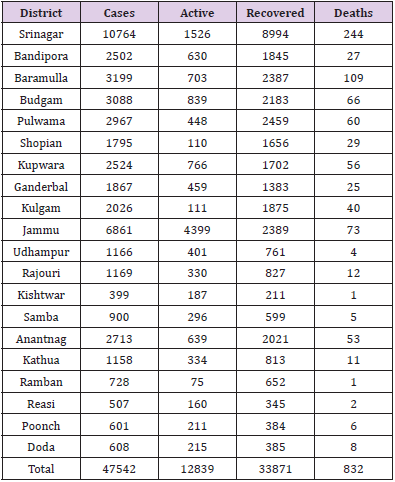
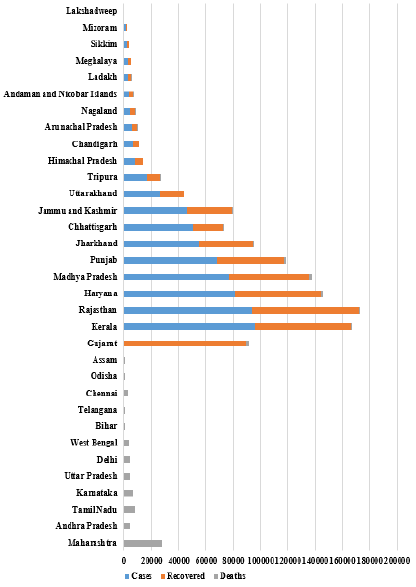
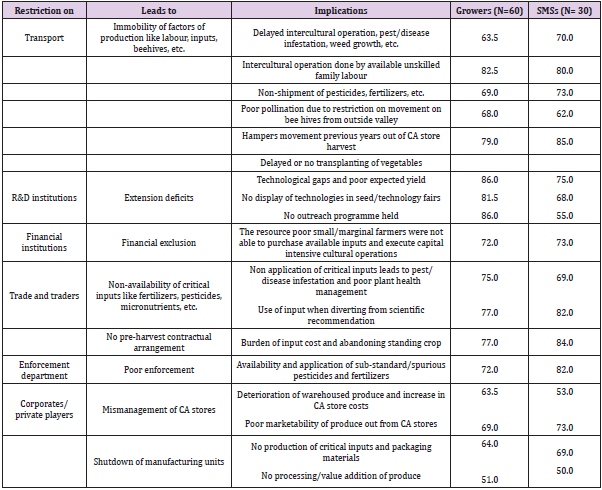
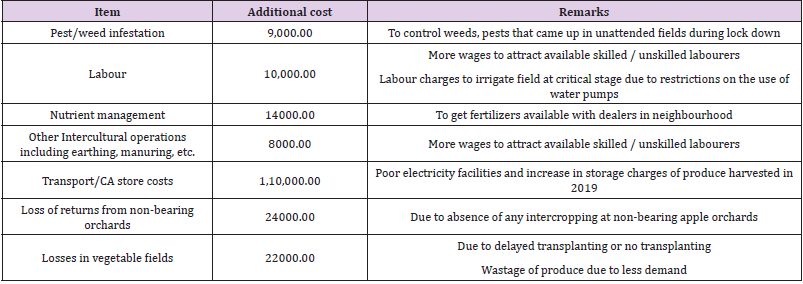

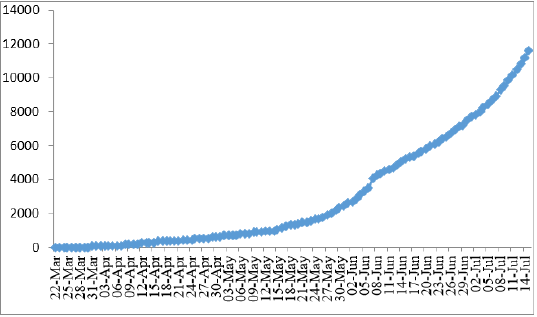
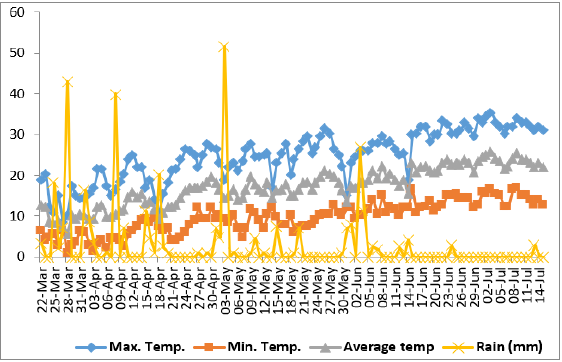





No comments:
Post a Comment
Note: Only a member of this blog may post a comment.